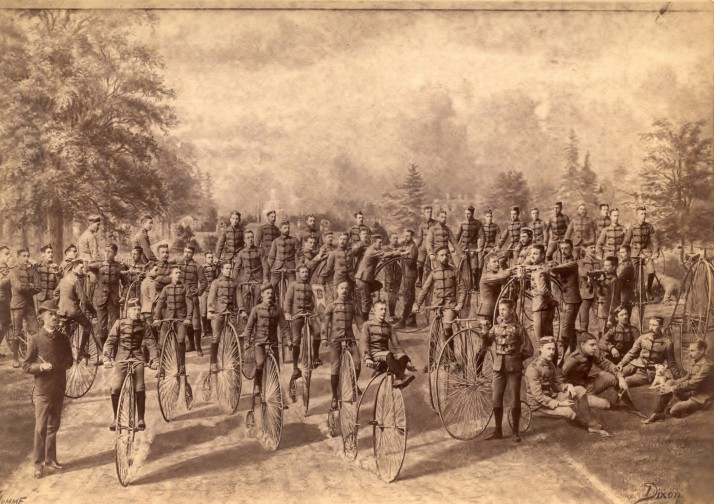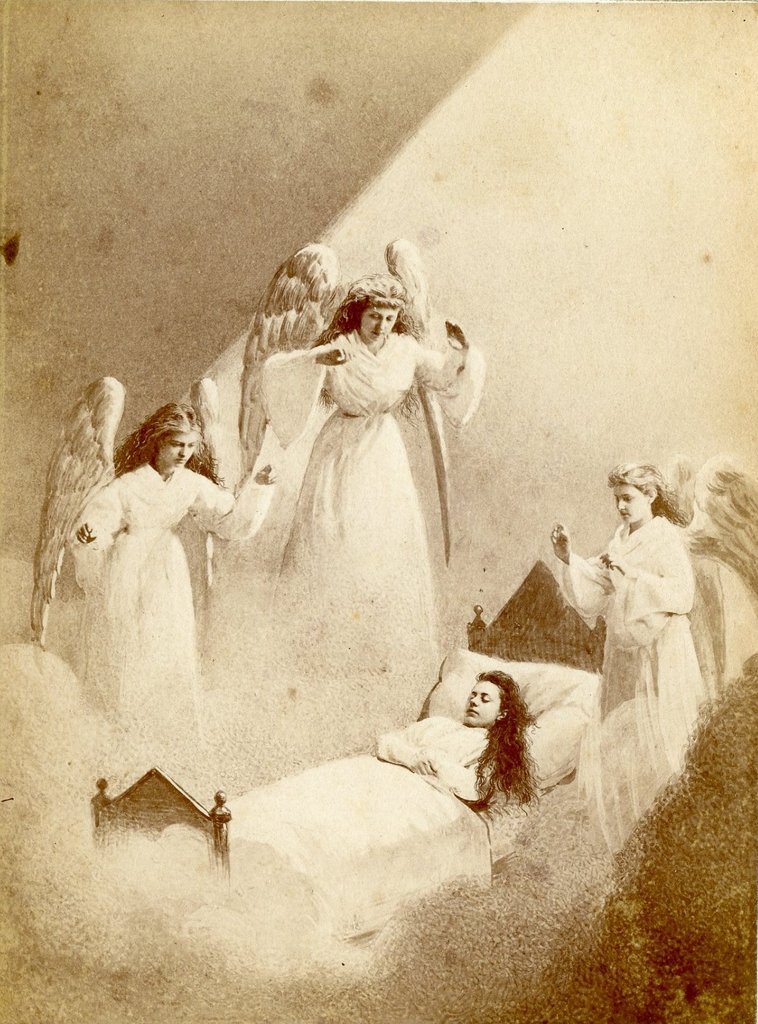 S. J. Dixon, The Wanderers Bicycle Club of Toronto, 1884, From the Cycling Photographica collection of Lorne Shields, Thornhill, Ontario. Image: Courtesy of Campbell House Museum
S. J. Dixon, The Wanderers Bicycle Club of Toronto, 1884, From the Cycling Photographica collection of Lorne Shields, Thornhill, Ontario. Image: Courtesy of Campbell House Museum
Since its conception, photography has proven to be both an interestingly unique artistic medium, renowned for its pictorial accuracy and wide accessibility, and a powerful tool for economic, political, and journalistic ventures. In our present day, images are constantly surrounding us, communicating messages and telling stories through a single still – “a picture tells a thousand words.” With the invention of Photoshop and digital cameras, photography has become a much more malleable practice that lets us easily manipulate the story, one that we often take for granted. When cameras still relied on delicate film and cumbersome equipment, it was difficult, if not near impossible, to capture more complex images. There could be absolutely no movement, the scene had to be fairly small, the lighting and models had to be very specifically oriented, and even then it was still possible for the image to be ruined. Early photographers and entrepreneurs therefore developed methods to circumvent these limitations, one of the most popular being the composite image.
 Eckerson and Bell-Smith (active 1874, Hamilton, Ontario, Dreaming of Angels, c. 1874, Cabinet card. Collection of Robert G. Wilson. Image: Courtesy of Campbell House Museum
Eckerson and Bell-Smith (active 1874, Hamilton, Ontario, Dreaming of Angels, c. 1874, Cabinet card. Collection of Robert G. Wilson. Image: Courtesy of Campbell House Museum
Composite photography was an incredibly laborious and complex process. First, the photographer shot portraits of all the models separately and the film processed. Next, the figures would be cut out and placed onto a new background, which were either hand painted or photographed themselves. Once the entire image was arranged, another photo was taken. If done correctly, the result would appear as a single coherent image with no visible outlines or disparities, though it was incredibly difficult to achieve. The tactic of the composite image was particularly successful for larger, more crowded scenes where movement was constant and conditions were generally uncontrollable. This made it particularly useful for advertisers and politicians who wanted to represent the popularity of their product or platform in a single still.
 James Notman, Group of Five Men and a Dog Playing Cards, 1882, From the collection of Robert Wilson, Photographic Historical Society of Canada. Image: Courtesy of Campbell House Museum
James Notman, Group of Five Men and a Dog Playing Cards, 1882, From the collection of Robert Wilson, Photographic Historical Society of Canada. Image: Courtesy of Campbell House Museum William Notman (1826-1891) and Henry Sandham (1842-1910, Montréal, Québec, Big John and Party Shooting Rapids, 1878, Albumen print. Collection of Robert G. Wilson. Image: Courtesy of Campbell House Museum
William Notman (1826-1891) and Henry Sandham (1842-1910, Montréal, Québec, Big John and Party Shooting Rapids, 1878, Albumen print. Collection of Robert G. Wilson. Image: Courtesy of Campbell House MuseumNotman’s “Big John and Party Shooting Rapids” (1878), for example, depicts a team of rowers tackling the Niagara Falls’ rapids. Not only was this too fleeting to properly document in the actual moment, but it was far too dangerous and impossible to re-enact. Through this technique, they were able to skillfully create a scene that no one could even conceive, subsequently becoming one of the most iconic images of that period. Even looking at it today with all of our new innovations, you can still sense the resonating impact of its heyday. Likewise, the accompanying images of the Montreal Carnival, Canadian landscapes, provincial legislatures, and even the Union and Confederate leaders maintain the aura of fascination and agency that would have undoubtedly mystified audiences at the time. To have all of these surviving remnants assembled into one place is truly a uniquely wonderful experience.
Simon Termine
*Exhibition information: More Real than Reality. The Art of Canadian Composite Photograph: 1870 – 1930, May 1 – 31, 2015, Campbell House Museum, 160 Queen Street West, Toronto. Gallery hours: Tue – Fri, 9:30 am – 4:30 pm; Sat – Sun, 12 – 4:30 pm.
